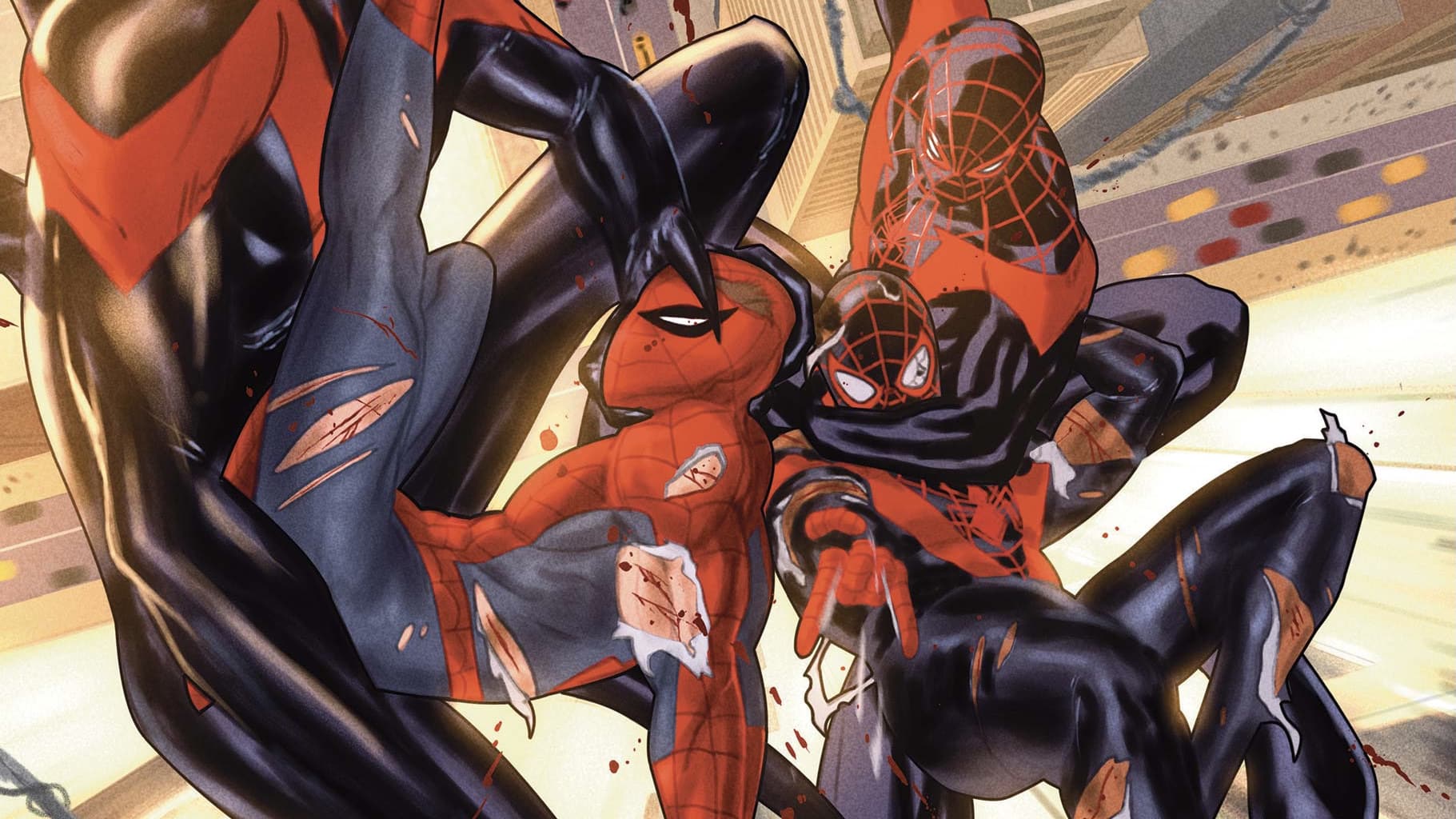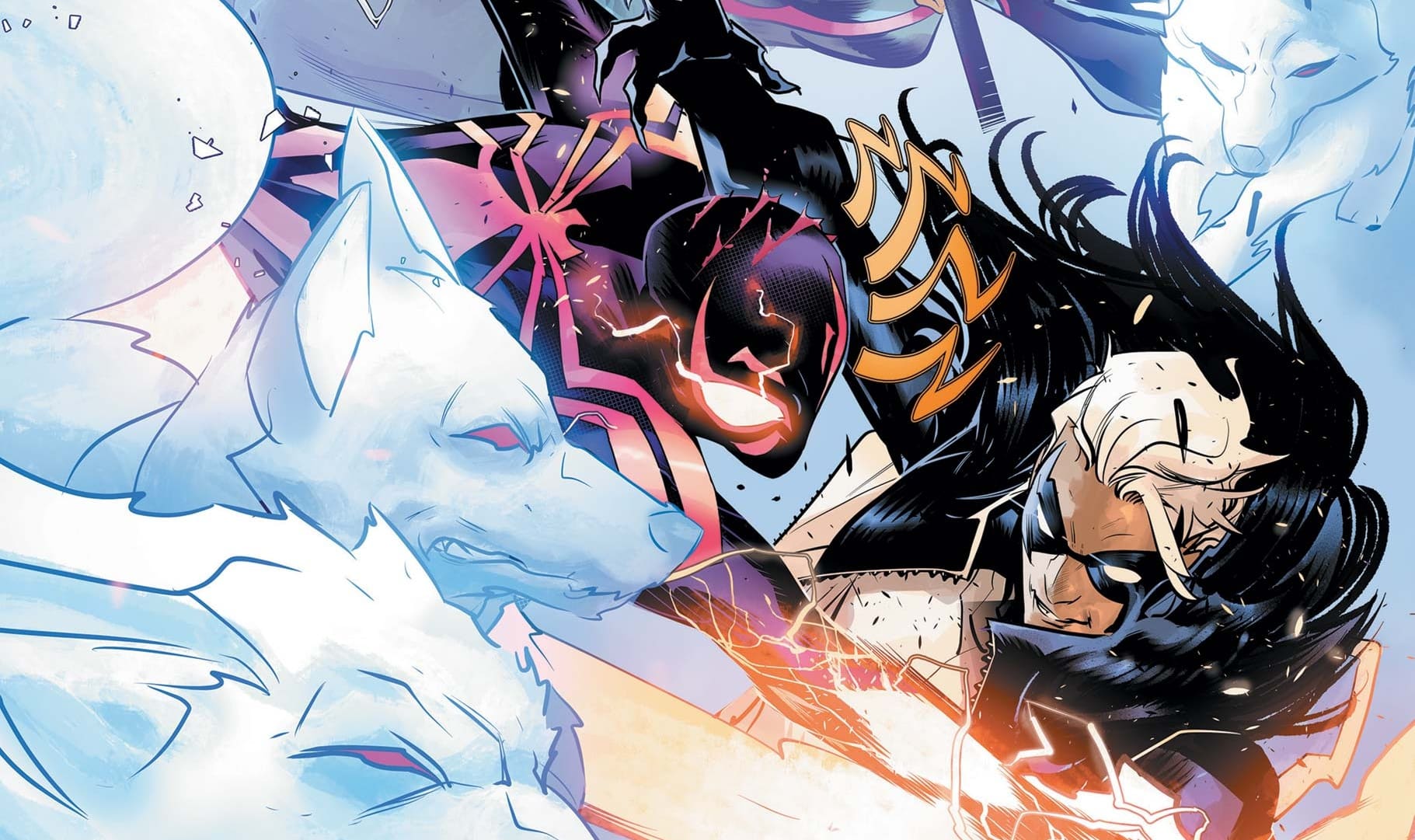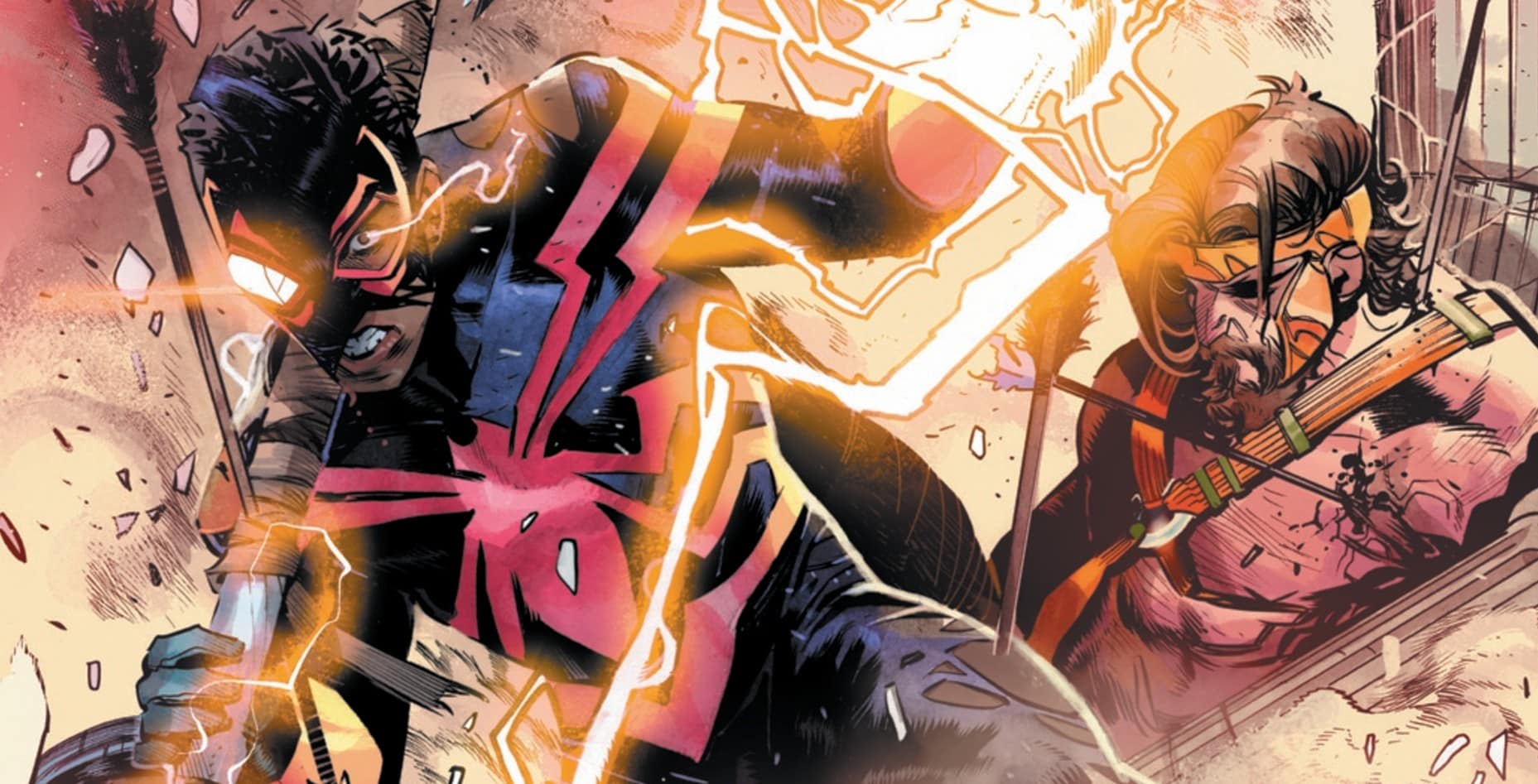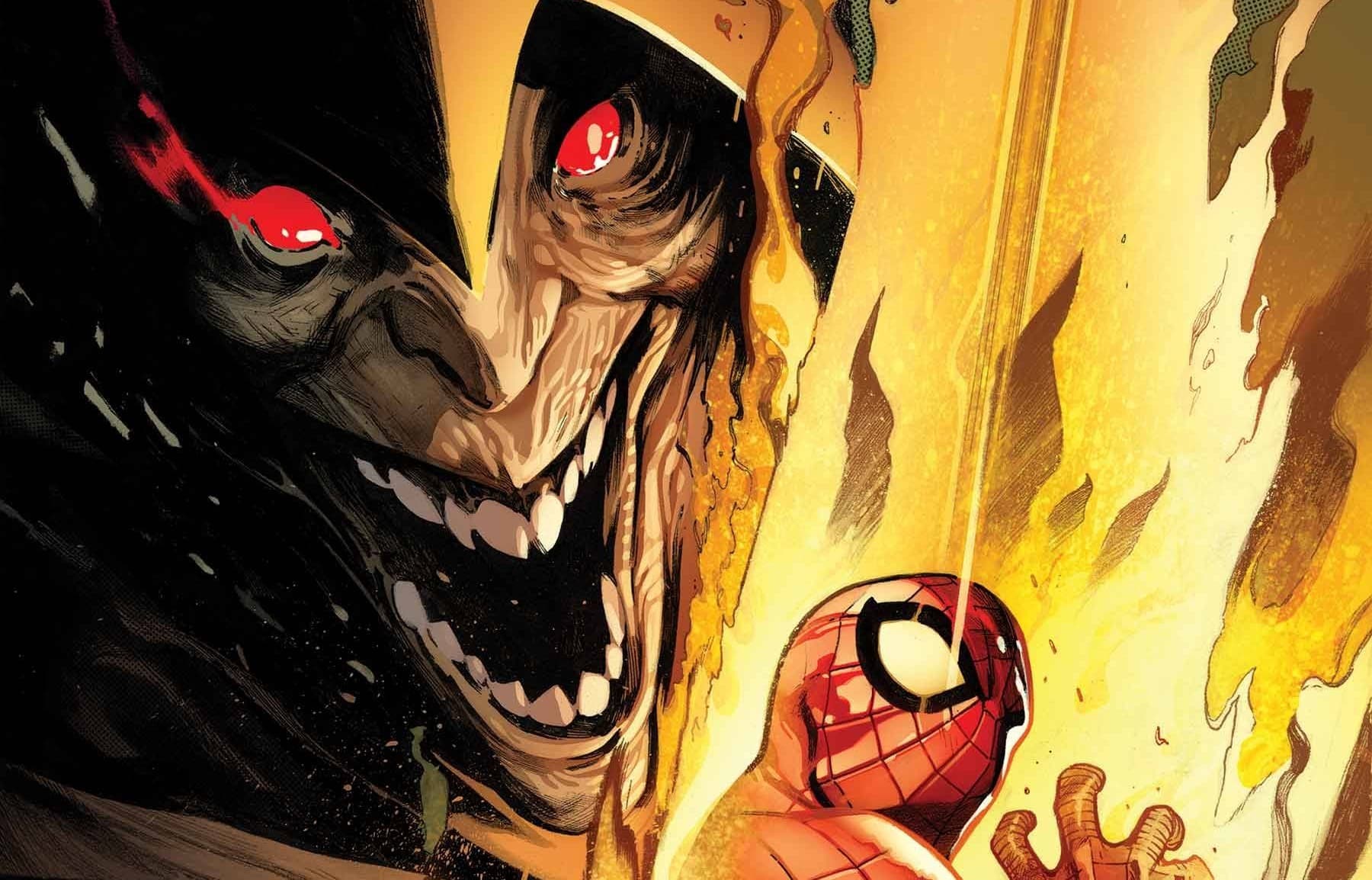It’s the second issue of Miles Morales’ own Clone Saga in Miles Morales: Spider-Man #26. Who are these mysterious antagonists? Where did they come from? Why are they here? And why the heck are we doing clones again? Written by Saladin Ahmed, drawn by Carmen Carnero, colored by David Curiel, and lettered by Corey Petit.
Remember the movie Groundhog Day? If you don’t, the theme of the movie – living the same day over and over again, trying to find meaning in life when the futility of your choices is clear – is probably familiar.
That’s really my takeaway here: Miles Morales is living out Groundhog Day in worst – and potentially best – ways.
We catch up with Miles just as he’s come across his three clones – the leader of them named Selim – “undamaged” in Arabic, and also, obviously, painfully, Miles spelled backwards, because of course. The clones want autonomy. Miles wants to talk. So of course they fight, because that’s what boys do when they can’t agree.
As Miles is accosted, the other friendly neighborhood Spider-Man shows up to help fend off the fight, ultimately fruitlessly.
Which brings me to the worst of Groundhog Day.
It’s bad enough the idea of clones is a rehashed Spider-Man trope. Whatever. What I find more frustrating (if not offensive) is how Peter has to come in to save the day. How Peter comes in to give Miles direction. How Peter moves the plot forward in a way Miles would be able to.
Miles doesn’t have agency. Things happen to him and he reacts. And reacts. And reacts. He doesn’t act. He doesn’t think proactively, just instinctively. That frustration is multiplied by the fact that the character with agency, Peter Parker, may be the real hero of this comic – the literal white savior. Echoing my thoughts from last month, Miles as Spider-Man deserves to exist in his own universe, not simply an offshoot of someone else’s. It’s bad enough you create a saga that’s already been done; at least let Miles take the lead here.
Anyway.
Our boy Miles goes home, where his best friend, who is dating his old crush, shows miles a text, obstenably from Miles, cursing said crush out.
Was that a lot? Yes, that was a lot.

The two quickly figure out this was the work of a clone (guess those clones got MIles’ memories as well?) and work on tracking the clones to their hideout.
Which brings me to the best parts of our Groundhog Day. The art is very good if not great. I love the angles, the action, the details and the haircuts. I think there could be value in the idea of a clone saga: what would Miles be if he made different choices; who would he be if I was untethered from his morals, upbringing, and mentor? And there are other interesting undercurrents too: Miles destroying a lab without fully knowing what he’s destroying; the clone’s desire to live; an idea of what it feels like for brother to attack literal brother.
There’s a lot of good material in Miles Morales: Spider-Man #26, even in a reheated product. Yet nothing in Saladin Ahmed’s history of writing Miles gives me faith that he will follow up on any of it. The clones are already talking like 90’s villains – on-the-nose Skelator evil with no nuance. Miles, who has been traumatized time after time, shows little emotional after effects of that trauma. There’s a lot that could make this great, but I fear none of those things will show up.
Thus I leave this issue mildly entertained but still wanting; pretty sure I know how things will end, but, like Bill Murray, ever hopeful that the next day – or the next issue – will change my perception for once, for good.
Hope springs eternal. We will see if Spiders do too.
A proud New Orleanian living in the District of Columbia, Jude Jones is a professional thinker, amateur photographer, burgeoning runner and lover of Black culture, love and life. Magneto and Cyclops (and Killmonger) were right. Learn more about Jude at SaintJudeJones.com.






